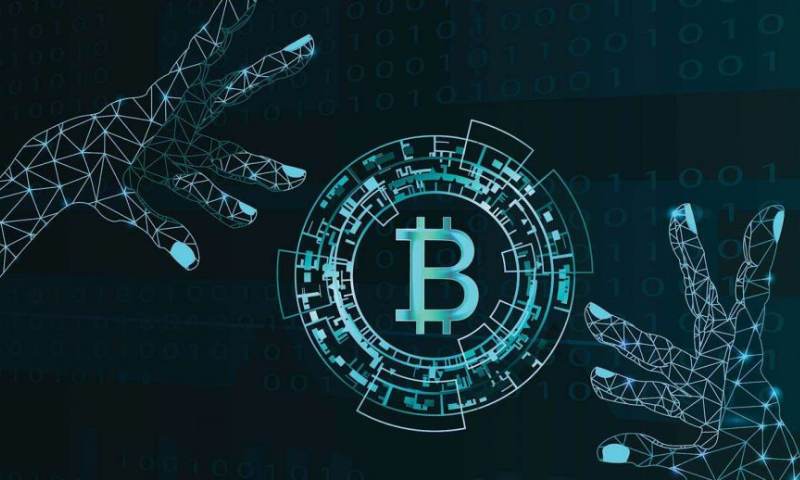Unraveling the Mystery: How Cryptocurrency Diverges from Blockchain Tech
The digital world buzzes with new tech, but how is cryptocurrency different from blockchain? It’s like the secret sauce that makes your favorite dish stand out. Cryptocurrency sparkles as digital cash but relies on blockchain, its secret cookbook, to make sure every flavor blends perfectly. Picture blockchain as a chain of unbreakable links, guarding info like an armored van moves cash. Cryptocurrencies, on the flip side, are the VIPs riding inside. They grab headlines, yet it’s the blockchain that paves their safe path. Sounds simple, right? Stay tuned, and I’ll break it down so even a fifth-grader can get it.
Demystifying the Concepts: Cryptocurrency and Blockchain Fundamentals
Understanding Blockchain Technology
Blockchain is like a digital ledger. Think of it as a notebook that keeps everyone’s notes, not just yours. The notes are transactions, and the notebook gets copied lots of times across many computers. This makes it tough to cheat because to change one note, you need to change them all at once. Every transaction, or note, added to this notebook is verified by lots of people’s computers. These computers are called “nodes.”
Blockchain is not owned by one person but shared by many. This is key in understanding blockchain. It’s a team effort to keep the ledger safe and correct. And the ledger, or blockchain, grows one block at a time. Each block has transactions that are like completed deals.
The Essence and Varieties of Digital Currencies
Now, let’s chat about digital currencies, or cryptocurrencies. They are like special keys you can use to trade or buy stuff. They are not like regular money that you can hold. Instead, they live on the blockchain. Think of each cryptocurrency like a different key, opening different locks. Bitcoin, for example, is one key, and it’s the big boss of crypto coins. It was the first and is still the well-known one.
But there are other keys, other types of cryptocurrencies. Ethereum is another key that’s special. It doesn’t just trade stuff; it helps run computer programs on its own blockchain. Ethereum’s blockchain has something called smart contracts, which work all by themselves when certain things happen.
There are lots more keys, or coins, too. They can do different things, like help artists sell art or for games online. These are tokens, part of what folks call token economies. Each coin or token has its own rules and uses.
People like these digital keys for a lot of reasons. They can move money fast and without a bank. They can invest in them, hoping they’ll be worth more later. Some folks just like new tech and want to be part of it.
Understanding the differences in crypto and blockchain is key. Crypto coins are things you can trade, invest in, or use like money. Blockchain is the tech that keeps all these keys safe and checks all trades. Some blockchains have crypto keys, and some do not. But they all have that shared notebook we talked about. Remember, blockchain is like a super-safe notebook that nobody owns but everyone can trust. It’s what lets us have crypto keys without needing banks or big companies to watch over our trades.
Here’s something cool—blockchain has a bunch of uses beyond money stuff. Like keeping records safe or proving who owns something. This is just the start of what blockchain can do. It’s why so many people are excited about it. They’re not just thinking about today; they’re dreaming about all the neat things it can do tomorrow. Understanding blockchain puts you in the know of one of the biggest leaps in tech we’ve ever seen. And that’s just plain exciting.
Distinguishing Features: How Cryptocurrency and Blockchain Operate Together and Apart
Cryptocurrency: More Than Just a Digital Asset
Imagine you have a special kind of money. This money is not like coins in your pocket. It lives on computers and the internet. It’s called cryptocurrency. Each one, like Bitcoin or Ethereum, is like a star in the sky. There are many of them, shining in different ways.
Is cryptocurrency the same as blockchain? No, it’s not the same. Cryptocurrency is that special internet money. Blockchain is like the space where all the stars are. It’s a smart kind of book that keeps track of all the internet money moves. This book can’t be lost, and no one can cheat.
Bitcoin was the first star, the first cryptocurrency. It showed us a new way to think about money. Every Bitcoin is made and moves on a blockchain network. This is like its home. Ethereum came after. It also lives on a blockchain. It lets us do even cooler things, like smart contracts. This is like making deals without needing a handshake.
People can send cryptocurrencies to each other without a bank in the middle. They can be used to buy things, save up, or as a way to invest. This is because they have value, just like the paper money you use to buy ice cream. But how do we know who has them? That’s where blockchain comes in.
Blockchain: The Underlying Framework Without Borders
Now, let’s talk about blockchain. What is it exactly? It’s a chain of blocks, but not the kind you play with. Each block is like a page in a book. It has a list of all the deals made with cryptocurrencies. Blockchain makes sure everything is fair and safe.
Can you have blockchain without cryptocurrency? Yes, you can. Cryptocurrency is a traveler on the blockchain train. But the train can carry more than just travelers. It can carry all sorts of important information. Things like who owns a house, or how medicines move around the world.
Understanding blockchain means seeing it as a big, open book that many computers hold. It’s a book that everyone can read, but no one can erase a page. If someone tries to cheat, the book will show us. Everyone who uses it has to agree before any change is made.
Blockchains can be public, like a park, or private, like your own backyard. They can share tokens, which are like special tickets for games and services. These tickets can be anything, not just money. That’s what’s so amazing about blockchains — they can be used for so many things!
Understanding the difference is important. Cryptocurrency is about the coins. Blockchain is the magic that makes the coins work. It’s what keeps them safe and lets them move around the world. I hope this shows you how cool and useful these two ideas are when they work together.
Practical Applications: Blockchain Beyond Cryptocurrencies
The Role of Smart Contracts and Decentralized Applications (DApps)
Let’s talk shop about blockchain! It’s not just for Bitcoin. This tech can do a lot more. Think of blockchain like a notebook that everyone can see. But no one can erase anything in it. This keeps everything fair and safe.
Smart contracts use this idea. They are rules written in computer code. They work on their own when certain things happen. For example, you bet with a friend on a game. You both put money down. The smart contract pays the winner after the game. No arguing, no forgetting, it just does it. Set the rules, then it runs without more talk.
Now, what’s a DApp? It’s like an app on your phone but uses blockchain. No one company is in charge, so it’s hard to shut it down. This is good for things we all need and share. It’s like a public service that runs all by itself. It can’t be stopped, and it’s fair for everyone.
DApps and smart contracts change the game. They help people trade, lend, and own things in new ways. They can let artists sell work directly to fans. They help people make deals without a middle man. This can save us all time and money.
Emerging Technology Trends: NFTs and Token Economies
Alright, time for the cool, new stuff. Ever heard of NFTs? These are one-of-a-kind digital items. They can be art, a tweet, even a song. Each NFT has a special ID that proves who owns it. They use blockchain to keep track of who owns what.
So why is everyone talking about them? Because they’re unique. Unlike most things online, they can’t be swapped one-for-one. This makes them special, like a rare baseball card.
But they’re more than art – they’re part of token economies. This is where we use digital coins for more than buying stuff. They can represent shares in a company, a part in a game, or voting rights in a club. Such economies create whole new ways for us to deal with value and ownership.
Why does this matter? Because it lets people own and sell things they never could before. It can make new markets and opportunities. And it’s all thanks to blockchain.
So, that’s the scoop. Blockchain can do much more than cryptocurrencies. It’s shaping a world where we trust code rules, not people. Digital currencies like Bitcoin make headlines. But the real story might be blockchain, changing how we agree, trade, and own things.
In summary, blockchain is a system that stores information in a way that is safe, open, and trustworthy. It’s the engine under the hood, powering all sorts of things we can do online. From making deals with smart contracts to owning unique digital items. It’s all part of this big, new digital world we’re building together.
Strategic Insights: Investing and Optimizing in the Crypto and Blockchain Space
Navigating Cryptocurrency Markets and Trading Platforms
Let’s dig deep, shall we? When we talk about crypto markets, think of a bustling bazaar. Here, folks come to buy and sell digital goodies named after dogs, or even your plumbing system! These digital goodies are your various types of cryptocurrencies, like Bitcoin and many, many others. There’s a lot to pick from, and they all exist thanks to blockchain technology.
Cryptocurrency trading platforms are digital playgrounds. In these places, folks like you and me exchange crypto coins for other assets or money. It’s like trading baseball cards, but with more serious faces and no gum included. To trade well, you have to stay sharp. It means keeping an eye on those tricky numbers and knowing when to make a smart move.
Blockchain Advancements: Security, Scalability, and Interoperability Challenges
Blockchain is like a magical diary that everyone can write in, but nobody can erase. It keeps track of all the trades, and this is key for security. The diary hides names using tricky puzzles only computers can solve. That’s encryption at work, making sure only you can access your digital cash stash.
But, here’s the catch: as the blockchain book gets thicker (meaning more people join the party), it can get slow. This is where scalability comes in. Smart folks are always tweaking the system to help it handle more guests.
Then there’s interoperability, a fancy word for “playing nice with others.” You’ve got different blockchain networks, like Ethereum and Bitcoin. Each has its own set of rules, kind of like different games with different strategies. We want these games to work together smoothly. That way, you can move assets from one chain to another without a hitch.
So, diving into cryptocurrency and blockchain is a bit like becoming a treasure hunter. It’s full of adventures and brain-teasers, but with a twist. You’re not just holding a map; you’re also helping draw it, as this world keeps changing and growing every single day.
So, here’s the big picture: We dove into blockchain and crypto basics. At first, it might seem a bit mind-boggling, but it’s like any other skill – practice makes perfect. You learned how blockchain acts like a digital ledger and cryptocurrencies are more than cool-sounding money; both have their own roles and perks.
We also explored how blockchain powers smart contracts and apps, shaping our digital future. Think about it – not only for buying digital art or coins but for making safer deals and even voting!
In investing, it’s clear that a deep dive into market trends and platform choices pays off. Keeping tabs on tech advances can help you make smart moves – remember, it’s about playing the long game!
In closing, whether you’re planning to invest or just curious, understanding these concepts can lead to savvy decisions. Stay informed, stay sharp, and keep an eye on this game-changing tech space.
Q&A :
How does cryptocurrency vary from blockchain technology?
Cryptocurrencies and blockchain technology are closely intertwined, but they serve distinct functions. Cryptocurrencies like Bitcoin and Ethereum are digital or virtual currencies that use cryptography for security, featuring decentralized control as opposed to centralized digital currencies and central banking systems. On the other hand, the blockchain is the underlying technology that maintains a tamper-proof, decentralized record of transactions that supports these cryptocurrencies and can also be applied to various other use cases such as smart contracts and supply chain management.
What is blockchain and why is it essential for crypto operations?
Blockchain is the foundational technology behind cryptocurrencies, providing a secure and transparent way to record transactions across a network of computers. It ensures immutability and decentralized verification of transactions, which eliminates the need for a trusted third party or intermediary, like a bank. This distributed ledger technology is what allows cryptocurrencies to operate in a peer-to-peer network, maintaining the integrity and security of data exchanges.
Can blockchain exist without cryptocurrencies?
Yes, blockchain technology can and does exist without cryptocurrencies. Though initially developed as the accounting method for Bitcoin, blockchain has since been recognized for its potential beyond cryptocurrency transactions. Industries such as healthcare, logistics, finance, and law employ blockchain to create secure and reliable systems for data management, supply chain tracking, and even voting systems.
Are all cryptocurrencies based on blockchain technology?
While most cryptocurrencies are built on some form of blockchain technology, there are alternative distributed ledger technologies (DLTs) like Tangle or Hashgraph. However, blockchain remains the most well-known and widely implemented DLT in the creation of cryptocurrencies. Each cryptocurrency operates on its own underlying technology and protocol, which may differ from others in terms of scalability, security, and consensus mechanisms.
What is the main benefit of blockchain that cryptocurrencies don’t offer?
The main benefit of blockchain that extends beyond the realm of cryptocurrencies is its ability to democratize trust and security in systems other than financial transactions. Blockchain can enhance supply chain transparency, provide proof of provenance for goods, enable secure voting systems, and much more. Its potential uses are diverse and not limited to financial applications, offering innovative solutions to data manipulation, storage, and authentication challenges across numerous sectors.


